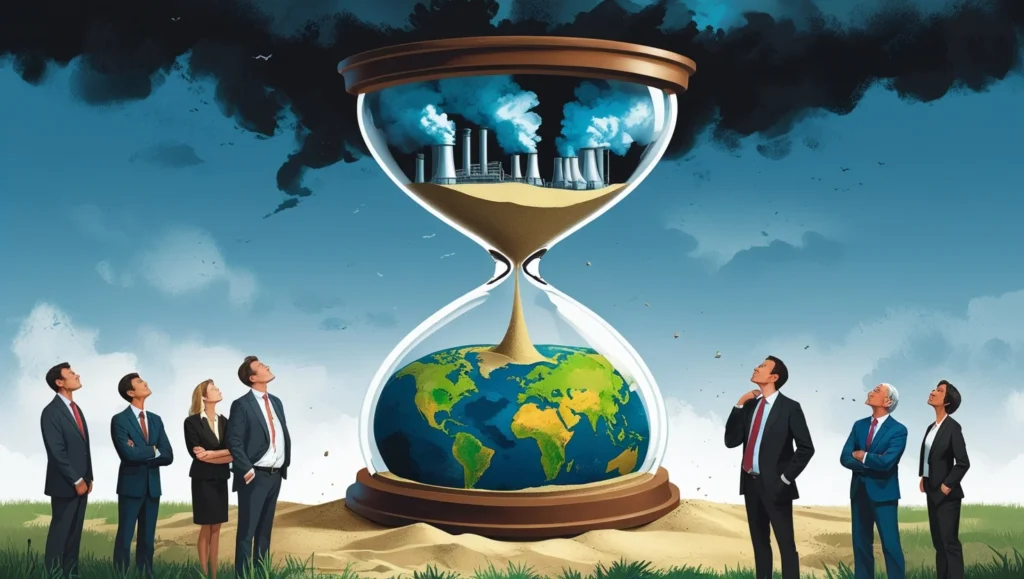Introduction
Climate Plantations have long been promoted as a breakthrough solution in combating climate change. From the outset, these systems—designed to utilize fast-growing crops for energy production while sequestering carbon dioxide—were heralded as an answer to our mounting environmental crises. However, recent research has called into question whether these methods can truly deliver on their promise. This article examines the critical limitations of climate plantations, explores the complex interplay between technological fixes and systemic change, and discusses actionable insights for more sustainable climate solutions.
The Promise and the Pitfalls
The idea behind climate plantations is rooted in the concept of Bioenergy with Carbon Capture and Storage (BECCS). Essentially, BECCS envisions vast tracts of land dedicated to growing fast-harvest crops that, when burned, generate energy while the released CO2 is captured and stored safely underground. Advocates initially saw this approach as a dual solution—providing renewable energy and mitigating greenhouse gas emissions simultaneously.
Yet, as emerging research from reputable institutions like the Potsdam Institute for Climate Impact Research suggests, the potential of these plantations is far more limited than originally assumed. The study, published in a high-impact scientific journal, highlights that when natural constraints and planetary boundaries are taken into account, the benefits of BECCS diminish significantly. These findings have prompted experts to re-evaluate the feasibility of relying on climate plantations as a central element of our climate strategy.
Overreliance on Technological Fixes

One of the central critiques of climate plantations is the risk of becoming overly dependent on what many describe as a technological fix. Instead of addressing the root causes of environmental degradation, there is a tendency to favor high-tech solutions that promise to counterbalance continued emissions. This approach, often seen in policy discussions and economic planning, can create a dangerous complacency. By assuming that speculative technologies like BECCS will eventually offset the damage, there is less immediate pressure to reduce emissions at their source.
- Economic and Political Implications:
Decision-makers sometimes incorporate BECCS into long-term climate models, allowing for business-as-usual practices to persist under the expectation that future carbon offsets will resolve current issues. This mindset can delay necessary investments in cleaner energy alternatives and fundamental systemic reforms. - Systemic Change vs. Stopgap Measures:
The narrative around climate plantations indirectly supports a broader critique: society’s reliance on finding a “silver bullet” rather than engaging in deep structural changes. Real-world examples have repeatedly shown that meaningful progress in climate action often comes from comprehensive reforms in energy production, land use, and consumption patterns rather than isolated technological interventions.
Ecological and Social Trade-Offs
Expanding the use of BECCS and related technologies would necessitate vast changes in how we use our land—a resource already under intense pressure globally.
- Land Use Conflicts:
Scaling up BECCS means converting significant areas of land currently dedicated to agriculture, conservation, and water security. In practical terms, this could exacerbate competition between food production and environmental conservation. Historical case studies indicate that large-scale land conversions often lead to unintended consequences, such as reduced biodiversity and compromised water resources. - Impact on Food Systems:
There is a growing recognition that the food system itself must evolve. The expansion of climate plantations may force reductions in agricultural land use, thereby impacting food production. Some researchers argue that transforming our global food system—through measures such as dietary shifts and enhanced sustainable farming practices—could yield dual benefits: reducing emissions from agriculture while freeing up land for nature-based solutions. - Social Considerations:
Any strategy that involves significant land use changes must also consider the social ramifications. Communities that depend on agriculture for their livelihoods might be adversely affected by large-scale shifts towards energy crops. Here, the balance between environmental imperatives and social justice becomes a delicate policy challenge that cannot be ignored.
Rethinking Climate Strategies: The Need for a Holistic Approach
Recent studies underscore that the most effective climate action does not rely solely on technological marvels. Instead, experts advocate for a holistic strategy that emphasizes direct emissions reductions alongside transformative changes in other key sectors.
- Clean Energy Transitions:
One of the strongest alternatives to relying on BECCS is investing in renewable energy sources such as wind, solar, and hydroelectric power. By reducing dependency on fossil fuels, these technologies can directly lower greenhouse gas emissions without the extensive land use conflicts associated with climate plantations. - Reforestation and Natural Solutions:
Reforestation projects have demonstrated significant potential in sequestering carbon while also restoring natural habitats. Unlike BECCS, reforestation carries additional benefits such as enhanced biodiversity, improved water cycles, and the bolstering of local ecosystems. These natural climate solutions provide a more integrated approach to managing climate risks. - Food System Transformation:
Shifts in dietary habits—specifically, reducing reliance on animal agriculture—are emerging as a necessary component of effective climate policy. Lowering meat consumption not only diminishes the emissions associated with livestock but also eases the pressure on agricultural land, allowing it to be repurposed for environmental regeneration or renewable energy projects. This intersection between diet and climate policy is increasingly supported by data-driven research and global case studies. - Policy and Regulatory Frameworks:
Policymakers are now being urged to reconsider long-term strategies. Instead of banking on uncertain future technologies, robust policies that prioritize immediate, measurable reductions in emissions are being proposed. Transparent and evidence-based policymaking is essential to ensure that interventions are both effective and equitable.
The Imperative of Immediate Action

The urgency of addressing climate change is underscored by the alarming pace at which global temperatures continue to rise. With the 1.5-degree Celsius target from the Paris Agreement slipping further out of reach, every delay in reducing emissions intensifies the risks of irreversible environmental damage.
- Time-Sensitive Targets:
Current models indicate that many climate scenarios rely heavily on BECCS to achieve net-zero emissions by mid-century. However, if the technology cannot scale as rapidly as required, this creates a critical gap in our ability to meet international targets. Experts argue that the focus should shift to strategies that deliver immediate results, such as rapid decarbonization of the energy sector and enhanced energy efficiency measures. - Balancing Short-Term and Long-Term Goals:
The interplay between immediate actions and long-term technological developments is complex. While there is value in investing in research and innovation, such investments should not overshadow the need for tangible, on-the-ground actions today. This balance is crucial to avoid scenarios where reliance on unproven technologies delays the adoption of proven, impactful solutions. - Lessons from Past Initiatives:
Historical evidence from previous environmental initiatives illustrates that strategies emphasizing incremental change and systemic reform tend to yield more sustainable outcomes than those focused solely on future technological breakthroughs. The lesson here is clear: robust action in the present is indispensable, and strategies must be designed with both immediacy and resilience in mind.
Best Practices for a Resilient Climate Strategy
Given the insights from recent studies and the evolving nature of environmental challenges, several best practices are emerging as essential components of an effective climate strategy:
- Integrate Multiple Approaches:
Instead of putting all eggs in the BECCS basket, strategies should integrate renewable energy expansion, reforestation, sustainable agriculture, and energy efficiency improvements. This diverse portfolio of solutions reduces risk and enhances overall resilience. - Focus on Data-Driven Decision Making:
Policymakers and industry leaders are encouraged to rely on robust, empirical research when designing climate interventions. Citing peer-reviewed studies and using data from high-authority sources ensures that policies are grounded in reality rather than speculative optimism. - Engage Local Communities:
Effective climate strategies must include the perspectives of local communities, whose livelihoods are often most directly affected by land use changes. Incorporating community insights and ensuring that policy decisions are transparent can foster broader support and better outcomes. - Promote Systemic Change:
Long-term success in combating climate change depends on rethinking entrenched systems—from energy production to global food supply chains. Policies that drive systemic change tend to produce more lasting benefits and reduce the likelihood of relying on uncertain future technologies. - Establish Clear Accountability:
Transparency and accountability are crucial for maintaining trust in climate policies. Establishing clear metrics for success, coupled with regular updates and independent evaluations, helps ensure that climate strategies remain on track and are adjusted as necessary.
Case Studies and Expert Opinions
Recent research by respected institutions has provided a wealth of data that further challenges the reliance on climate plantations. For example, studies conducted by the Potsdam Institute for Climate Impact Research have detailed how the ecological limits of land use severely constrain the potential benefits of BECCS. This research highlights that, even under optimal conditions, the net carbon capture might fall short when compared to the aggressive emissions reductions required to stabilize the climate.
- Real-World Implications:
In practice, the adoption of BECCS on a large scale could lead to unintended consequences, including food security challenges and biodiversity losses. Experts argue that any climate strategy must account for these systemic risks by balancing energy production with ecological preservation. - Expert Insights:
Industry leaders and environmental scientists stress that while technology can play a role in climate mitigation, it should not be viewed as a panacea. Instead, a combination of immediate emission cuts and innovative, yet proven, natural solutions offers the most promising path forward. These perspectives are reinforced by global policy discussions and have been echoed in forums involving high-authority organizations.
Conclusion: Charting a Sustainable Future
In summary, while the concept of Climate Plantations was initially embraced as a promising tool in the fight against climate change, emerging research and expert analyses suggest that their potential is significantly limited. Rather than leaning on speculative technological fixes, the most effective and resilient climate strategies will require:
- Aggressive, immediate reductions in greenhouse gas emissions,
- A holistic integration of renewable energy, reforestation, and sustainable agriculture, and
- Systemic policy reforms that drive long-term transformation.
This comprehensive approach not only addresses the urgent need for environmental action but also aligns with broader social and ecological goals. The ongoing discourse around climate solutions reminds us that while technology can be a valuable asset, it is the direct, data-driven actions taken today that will ultimately determine our planet’s future.
For decision-makers, industry leaders, and concerned citizens alike, the message is unequivocal: the journey toward sustainability must be grounded in reality, backed by credible research, and implemented through actionable, systemic change.


